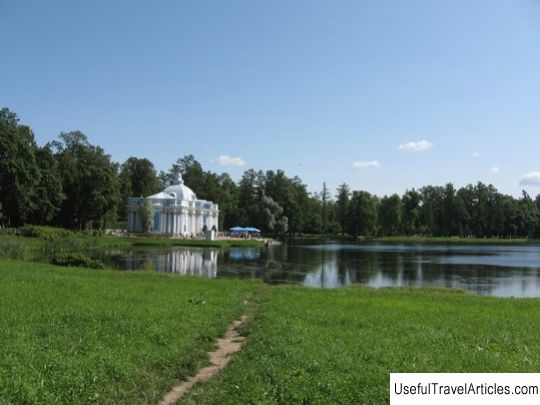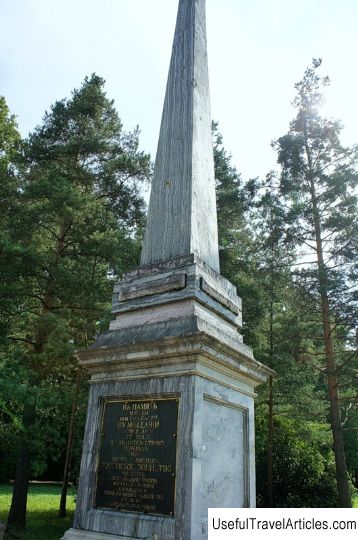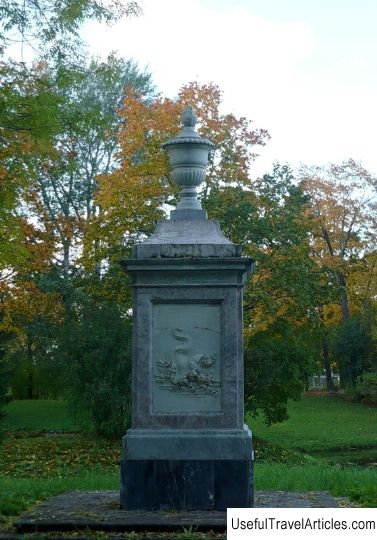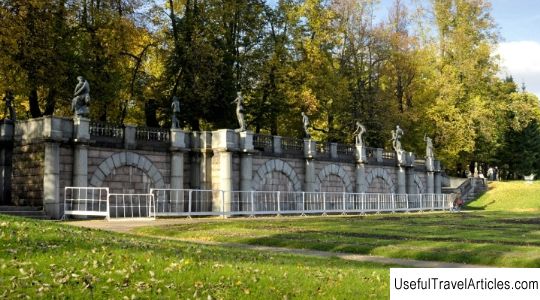Oryol gate description and photos - Russia - St. Petersburg: Pushkin (Tsarskoe Selo)
Rating: 7,5/10 (4059 votes) 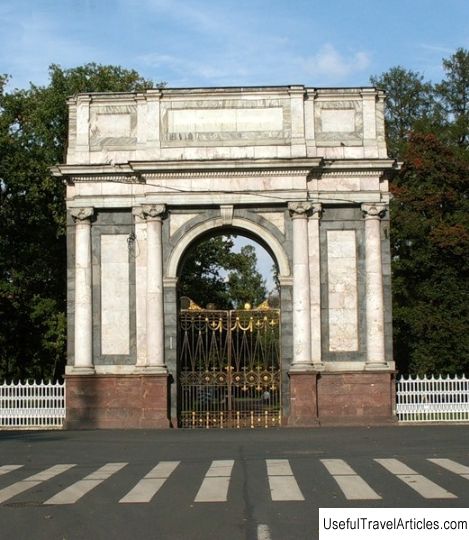
Oryol gate description and photos - Russia - St. Petersburg: Pushkin (Tsarskoe Selo). Detailed information about the attraction. Description, photos and a map showing the nearest significant objects. Photo and descriptionIn the southwestern side of the Catherine Park, not far from the Ruined Tower, near the intersection of Parkova Street and Krasnoselskoye Highway, the Orlov Gate was installed. This gate was designed by the architect Antonio Rinaldi. The gate was placed on the site of a temporary, luxuriously decorated triumphal arch made of wood for the passage to Gatchina, which was in the possession of Prince Grigory Orlov. Thus, Empress Catherine II, during her lifetime, presented her favorite with a monument in honor of his victory over the plague ("black death") that overtook Moscow in 1771. In 1771, during an epidemic from the plague in Moscow more than 1,000 people died every day. The streets were strewn with corpses. Unable to cope with the epidemic, Governor-General P.S. Saltykov left Moscow. Behind him, the dying city was left by Chief of Police I.I. Yushkov and other influential persons. The city was beheaded, death and looting raged in the streets. Empress Catherine II ordered Count Grigory Grigorievich Orlov to leave for Moscow, to whom she was already indifferent at that time. Orlov is endowed with extraordinary powers. According to some contemporaries, it was as if the empress hoped in this way to get rid of the annoying favorite. G.G. Orlov enters Moscow, drowning in epidemics, with a whole staff of doctors and 4 regiments of the Empress's Life Guards. The headquarters was organized at the homes of the military leader E.D. Eronkin, one of the few military commanders who still did not leave the city. Count Orlov organized a whole range of measures to eradicate the plague. Firstly, methods were strengthened to combat theft and looting up to the death penalty, carried out right on the spot. Control over the import and export of goods from Moscow was organized. Additional plague hospitals were erected on the outskirts of the city. Moscow itself was divided into sanitary zones, each of which was controlled by a doctor assigned to it. The houses where the disease came were boarded up and marked with crosses. With the help of measures taken by Orlov and the doctors, the epidemic soon stopped. Life in Moscow gradually returned to normal. Work on the construction of the Oryol Gate was carried out under the leadership of the architect Ilya Vasilyevich Neyolov and the stone master Pinketti. The Oryol Gate is practically a square in the form of a monumental arch, the height of which is about 15 meters. For the construction of the triumphal arch, materials such as Tivdian pink marble, gray Siberian marble, bronze, wrought iron, and gilded copper were used. This is the first triumphal arch in our country made of permanent materials. An inscription is engraved on the arch on the side of the Gatchina road, perpetuating the feat of Count Orlov. Perhaps the text of this inscription belongs to Catherine the Great herself. In 1781 it was decided that the arch should be locked. After 6 years, for this purpose, according to the drawings of the architect Giacomo Quarenghi, special valves were made at the Sestroretsk factories. In 1784-1786, bars appeared on both sides of the gate. At the beginning of 1790, the Oryol Gate was used as a triumphal gate for the solemn meeting of Prince Grigory Alexandrovich Potemkin-Tavrichesky, who arrived in Tsarskoe Selo with the news about the capture of the fortress of Ochakov by the troops of Alexander Vasilyevich Suvorov and about the victories of Russian soldiers won over the Turkish army in Moldova. The stylistic solution of the Oryol Gate contains ancient Roman details, such as pilasters, on the sides there are columns on the pedestals of the high arch. The Tivdian pink marble of the columns and panels contrasts with the gray marble used for the main part of the building. A pipe is installed under the Oryol Gate, through which water from the Taitskiye Springs enters the ponds and canals of the park.  We also recommend reading Volkhov Museum of the history of the city description and photos - Russia - Leningrad region: Volkhov Topic: Oryol gate description and photos - Russia - St. Petersburg: Pushkin (Tsarskoe Selo). |
